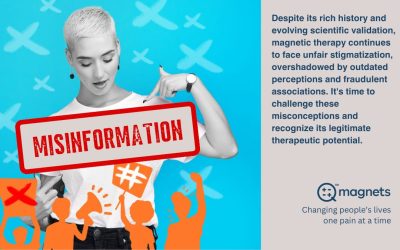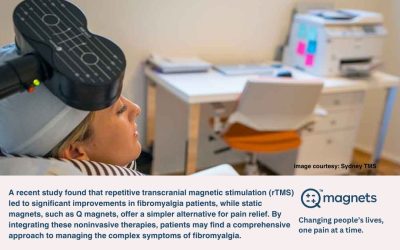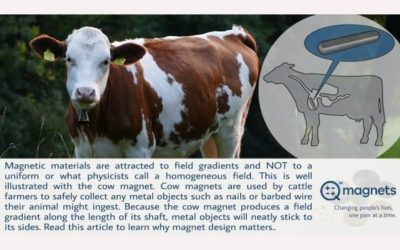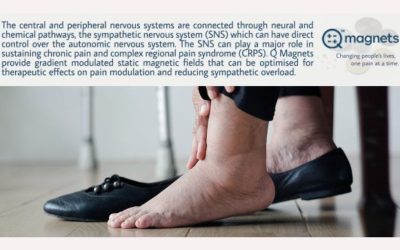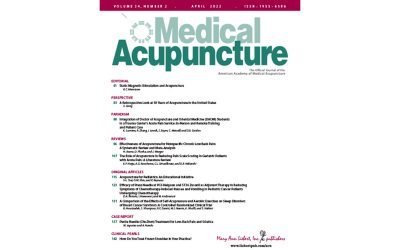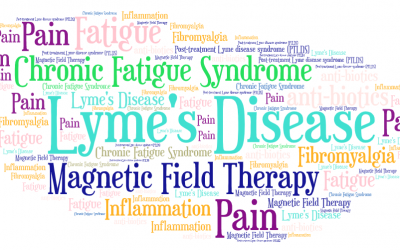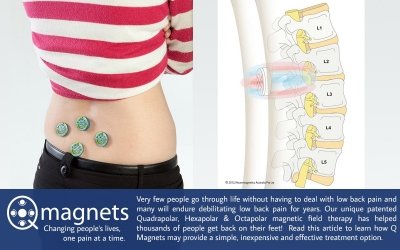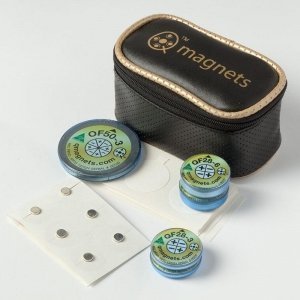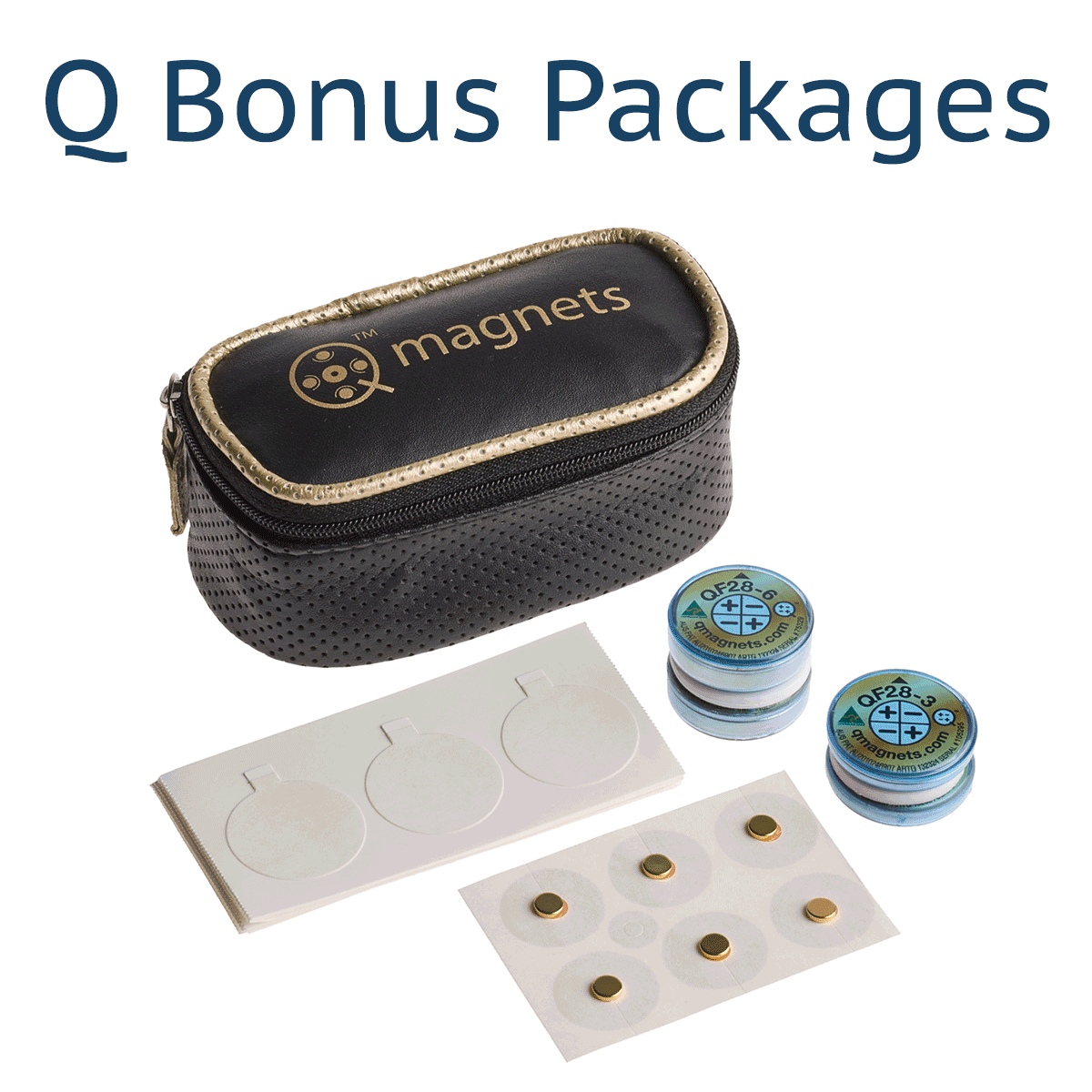Magnetic Therapy
Magnetic therapy is applying static magnets that produce a therapeutic magnetic field for pain relief and recovery for a variety of issues.
Today many people use magnet therapy for pain management. Health professionals such as physiotherapists, acupuncturists, massage therapists, chiropractors, neurologists, nutritionists, sports performance trainers, vets and rehabilitation centers might be surprised with the latest advancements in magnetic therapy.
Painaustralia estimated 3.24 million (~16%) Australians were living with chronic pain in 2018. In United States in 2016, an estimated 20.4% of adults had chronic pain. These studies also point to unhealthy treatment practices. Clinical trials have shown that magnetic therapy can benefit a number of painful conditions, therefore it should definitely be considered and is worthy of further research.
This article, covers the basics of magnetic therapy and will assist readers to understand what kind of magnetic therapy is the most effective. If you’re a home user, you’ll get a fair idea of how to assess magnetic therapy products and get a better understanding of magnetic therapy. Professionals will get an in-depth insight into how it works and what are the current advancements in magnetic field therapy.

What are the benefits of magnetic therapy?
Magnetic therapy is used to alleviate pain and has many health benefits. It has been studied as adjunct therapy for treating symptoms of multi sclerosis (MS), osteo and rheumatoid arthritis1, tissue2 and bone3 injury, neuropathy4, psychiatric disorders, sleep5, stress, genital pain, post-polio pain, pain syndroms and many more conditions. These benefits might naturally occur due to the anti-inflammatory effects that magnetic therapy provides.
Effects purported by users and practitioners of magnetic therapy are:
- Increased circulation for old injuries
- Reduced circulation and less swelling for sprains and strains and other acute injuries
- Reduced inflammation
- Correction of energy imbalances
- Enhanced immune function
- More restful sleep
- Stress relief
- Reduced or cessation of pain.
To get better knowledge about the benefits of magnetic therapy please refer to our articles in the blog section.
In order to experience substantial benefits by using magnetic therapy, it’s important to learn about magnetic devices that are specially developed, based on science to provide such benefits.
How does magnetic therapy work?
Magnetic therapy is deemed effective when it helps to resolve an issue. The effectiveness of magnetic therapy depends on the individual condition, magnet polarity design, strength of magnetic field, application method and magnetic field gradients.
Magnetic fields are a vector quantity and as such have both quantity and directional values. Different magnetic materials have different properties and the size of a magnet also determines the strength and depth of penetration. Multipolar magnets such as the Q Magnets are much more complex than the common bipolar type, they generate magnetic field gradients which have very different effects on moving charged particles and as it turns out on nerves as well2. See one of the better explanations here.
The following video illustrates the complexity of magnetic fields and the enormous differences that can be created depending on the orientation.
Today, several magnetic therapy products are available for sale and all are not created equal. It’s safe to assume that the degree of healing experienced would depend on the individual’s condition and also the magnetic therapy device and the treatment protocol.
Therapeutic Magnets Research
Magnetic therapy devices today come in all shapes and forms such as bracelets, insolves, bands, braces, pillows, mats, blankets and so on.
Without getting side tracked into some of the more, shall we say unusual application methods; there are generally three theories into the application of magnets on the body:
- Magnetic jewellery such as magnetic bracelets to affect the energy flow in the body. See article here why we don’t sell magnetic jewellery.
- You apply either the south or north pole over different parts of the body, usually the painful area or acupuncture or acupressure points or say the belly button. See article here explaining the history and evidence for using the north or south pole of a magnet.
- The magnets are placed on very specific points on the body, usually over nerves, joints or areas of injury. See recommended placements here.
While there may be some legitimacy to all three approaches, the third approach has been more thoroughly researched and has a significant body of published data to support the therapy.
When asked if magnet therapy helps osteoarthritis on Arthritis.org, Dr. Daniel Clauw, MD, Rheumatologist suggests, “consider purchasing a magnet to wear over the area of the body where you need pain relief before making a more substantive investment in a magnetic mattress pad.”
For researching therapeutic magnetic devices, apart from the comfort factor, a more important aspect to consider would be type of therapeutic magnets used.
Magnetic therapy research undertaken at Vanderbilt University6 suggests that the common bipolar magnets that are commonly sewn into mattresses, blankets, pillows and body wraps are having negligible effect on the nerve stimulus pathways, unlike the magnetic field gradients generated by strong quadrapolar magnets that actually work.
Materials used in magnetic therapy devices
There are many variations of magnets used in magnetic therapy, the broadest category being electromagnetic (magnetism generated from electric current) or static magnet therapy. For static magnets there are essentially three types7:
| MAGNETIC MATERIAL | ENERGY PRODUCT (MGOe) |
| Rubberized Flexible (like fridge magnets) | 0.5 – 1.5 (very weak) |
| Ceramic | 1.5 – 3.5 (moderate) |
| Rare Earth Neodymium | 30 – 50 (very strong) |
It is important to understand that a magnetic field and its depth of penetration depends on the size and shape of a magnet, as well as the type of magnetic material. For instance, the earth’s magnetic field is 0.5 Gauss (0.05 mT) and will affect a compass in a commercial airliner travelling at an altitude of 10,000 meters, while a small rare earth 3,000 Gauss (0.3 Tesla) magnet (supposedly 6,000 times stronger than the earth’s) will have no effect on a compass just 1 meter away. Clearly there is much more to magnets than Gauss or Tesla rating.
Neuromagnetics, the parent company of Q Magnets, is a world leader in magnetic therapy research and has innovated and patented some of the most effective multipolar magnets. We have had the honor of working with some of the best scientists in the field, you can find our published articles and clinical trials on this page.
Polarity and area of effect of therapeutic magnets
All magnets have a north (positive) and south (negative) pole and hence are bipolar. In magnetic therapy the term unipolar is sometimes used to describe a bipolar magnet used in a way where only one pole is directed to the body. Multipolar is used when describing a device that has both north and south poles directed to the body. Using the terms positive or negative pole can be misleading, as it can erroneously imply a harm or benefit.

A Quadrapolar Q Magnet is a multipolar (i.e., Quadrapolar on one side) static magnet made of the highest quality rare earth neodymium magnetic material with a 1.35 Tesla or 13,500 Gauss rating at its strongest point and Energy Product of 45 MGOe (N45). The name Quadrapolar comes from the four alternating poles on the one face of the magnet.
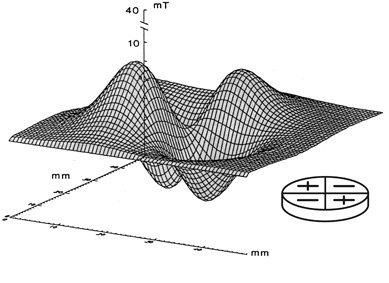
Therapeutic magnetic field arrays
The image below is taken from the research paper – “Effect of steady magnetic fields on action potentials of sensory neurons in vitro”. McLean et al, Environmental Medicine, 8: 36-45, 1991. It shows the comparison of five different magnetic field arrays on nerve tissue.

The magnetic arrays are shown to the left of the respective rows. Intensity was set to elicit an action potential (the nerve’s firing) with each stimulus (PRE). After exposure to the Quadrapolar array (MAGNET), the action potential firing was blocked completely in 4 minutes 30 seconds (first row), despite increased stimulus intensity. After removal of the array (POST), action potentials reappeared and the rate increased gradually over 5 minutes 40 seconds.
An array of four magnets with positive poles aided limited firing completely within 4 minutes 30 seconds (second row) and an array of four negative poles blocked about 50% of action potentials in 10 minutes (third row). Recovery occurred within seconds after removal of these arrays (POST). Two magnets of alternating polarity (fourth row) and a single magnet of positive polarity (fifth row) did not block action potential firing at all after 10 minutes.
Conclusions
Magnetic therapy works for relieving pain on the nerve level. It can have a molecular action that reduces inflammation, thereby improving the capacity to rejuvenate.
Magnetic therapy research shows that it is most effective provided you have access to the right magnetic therapy devices and use correct methodology or treatment protocols to apply them. Reading through the published clinical trials, it’s clear that multipolar therapeutic magnets are the most effective and its recommended to spend some time understanding and visualizing the field of effect of the therapeutic magnet you decide to use. The therapeutic magnet used should have steep enough magnetic field gradients, so that the field reaches the damaged area so as to envelope the target tissue.
Citations
-
Segal N, Toda Y, Huston J, et al. Two configurations of static magnetic fields for treating rheumatoid arthritis of the knee: a double-blind clinical trial. Arch Phys Med Rehabil. 2001;82(10):1453-1460. doi:10.1053/apmr.2001.24309
-
Man D, Man B, Plosker H. The influence of permanent magnetic field therapy on wound healing in suction lipectomy patients: a double-blind study. Plast Reconstr Surg. 1999;104(7):2261-2266; discussion 2267-8. doi:10.1097/00006534-199912000-00051
-
Panagos A, Jensen M, Cardenas D. Treatment of myofascial shoulder pain in the spinal cord injured population using static magnetic fields: a case series. J Spinal Cord Med. 2004;27(2):138-142. doi:10.1080/10790268.2004.11753745
-
Head K. Peripheral neuropathy: pathogenic mechanisms and alternative therapies. Altern Med Rev. 2006;11(4):294-329. https://www.ncbi.nlm.nih.gov/pubmed/17176168.
-
Sandyk R, Anninos P, Tsagas N. Magnetic fields and seasonality of affective illness: implications for therapy. Int J Neurosci. 1991;58(3-4):261-267. doi:10.3109/00207459108985440
-
McLean MJ, Holcomb RR, Wamil AW, Pickett JD, Cavopol AV. Blockade of sensory neuron action potentials by a static magnetic field in the 10 mT range. Bioelectromagnetics. 1995:20-32. doi:10.1002/bem.2250160108
-
Colbert A, Markov M, Souder J. Static magnetic field therapy: dosimetry considerations. J Altern Complement Med. 2008;14(5):577-582. doi:10.1089/acm.2007.0827
Further Reading Resources on Magnetic Therapy Research
General Information on Magnets
Process and materials used in manufacturing different types of therapeutic magnets
Magnetic Therapy in Media
Articles and commentary about magnetic therapy in popular news media.
Magnetic Therapy Resources
Articles and reports available in the public domain that relate to research and reports into magnetic therapy from credible agencies such as universities and government bodies.
Enhancing ACL Recovery with Q Magnets: An Adjunctive Approach to Non-Surgical Treatment
ACL injuries, particularly among athletes, have typically been treated with surgery, requiring a long stint on the sidelines. However, a non-surgical approach, emphasizing physical therapy, strength training, and functional rehabilitation is gaining popularity. In...
Unfair Irrational Stigmatization of Magnetic Field Therapy in Modern Media
Magnetic field therapy has a rich history, dating back centuries, and used for a variety of therapeutic purposes. First used by prominent scientists, like the physician to Queen Elizabeth I, William Gilbert and the famous 19th century physician Franz Mesmer, who...
“Breakthrough in Fibromyalgia Treatment: How rTMS and Static Magnets Can Transform Lives”
A recent study published in Brain Sciences explored the impact of 20 sessions of low-frequency repetitive transcranial magnetic stimulation (rTMS) on patients with fibromyalgia, revealing significant improvements in cognitive and psychiatric functions compared to a...
Why magnet design matters? Learning from Cow Magnets
Magnetic materials are attracted to field gradients and NOT to a uniform or what physicists call a homogeneous field. This is well illustrated with the cow magnet. Cow magnets are used by cattle farmers to safely collect any metal objects such as nails or barbed wire their animal might ingest. Because the cow magnet produces a field gradient along the length of its shaft, metal objects will neatly stick to its sides. This is how it works…
Magnetic Mattress Pads helping provide support for those suffering pain
Learn how magnetic mattress pads reduce pain based on clinical research and discover Q Magnets’ magnetic mattress pads for rapid pain relief.
The role of sympathetic nervous system in chronic pain and Q Magnet therapy application
The SNS can play a major role in sustaining chronic pain, particularly in the case of Complex Regional Pain Syndrome (CPRS). Learn how Q Magnets can be applied for therapeutic effects on pain modulation and reducing sympathetic overload.
Q Magnets Case Study Published in the Medical Acupuncture Journal
Medical acupuncturists are experts at identifying and accurately locating the morphological structures to be targeted. Quadrapolar, or Q Magnets produce an optimised field and provide the acupuncturist with an additional modality to target these structures that is...
Lyme Disease & Chronic Fatigue Syndrome, Can Magnetic Therapy Help?
Lyme and Fibromyalgia have one thing in common, that is, a link to Chronic Fatigue Syndrome (CFS) which is a pain condition affecting the whole-body. This article explores Lyme disease and CFS, and see where magnet therapy can help.
Chakra Healing with Magnet Therapy
Discover your chakras and learn how magnet therapy can be applied for chakra healing or chakra balancing.
Magnetic Field Therapy for Low Back Pain
Very few people go through life without having to deal with low back pain and many will endure debilitating low back pain for years. Our unique patented Quadrapolar, Hexapolar & Octapolar magnetic field therapy has helped thousands of people get back on their feet! Read this article to learn how Q Magnets may provide a simple, inexpensive and effective treatment option.
Got Q Magnets ?
Since 2009, Q Magnets have led the way with the world’s most effective magnetic therapy devices. We provide a 30-day satisfaction guarantee and deliver worldwide.
We are dedicated to support our products with sound advice from experienced health professionals to achieve the best results!


